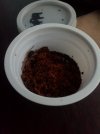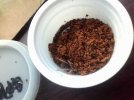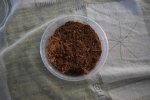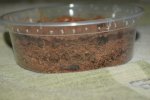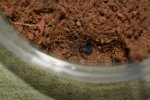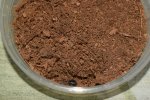- Messages
- 34
Hi, I got the spiderling this afternoon. I just want some clarifications regarding what the seller said regarding caring for the spider:
1.) Since the sling is just 1" he told me to feed it twice a week. Once it grows an inch, it should then be fed once a week. Once it reaches around 3" the feeding should be once a month. He gave me nymphs as the spider's food.
2.) For the spiderling's water, I should spray half of the cup where he / she is currently residing with a small spray bottle. I should use a spray bottle that's never been used to avoid contamination.
Did he miss some other pointers? Were the ones he said correct?
I will post pictures of the spiderling, the nymphs, and the cup where he / she is now resting on.
Cheers!
1.) Since the sling is just 1" he told me to feed it twice a week. Once it grows an inch, it should then be fed once a week. Once it reaches around 3" the feeding should be once a month. He gave me nymphs as the spider's food.
2.) For the spiderling's water, I should spray half of the cup where he / she is currently residing with a small spray bottle. I should use a spray bottle that's never been used to avoid contamination.
Did he miss some other pointers? Were the ones he said correct?
I will post pictures of the spiderling, the nymphs, and the cup where he / she is now resting on.
Cheers!

